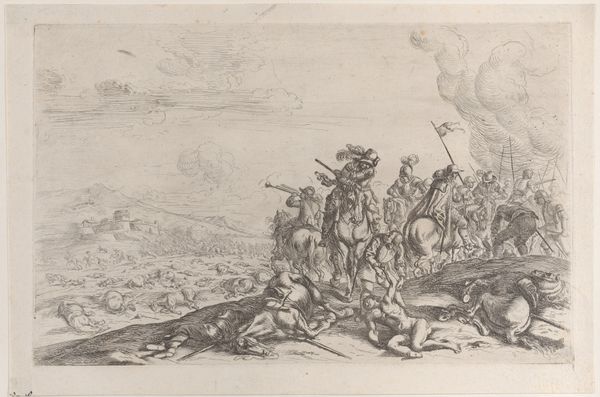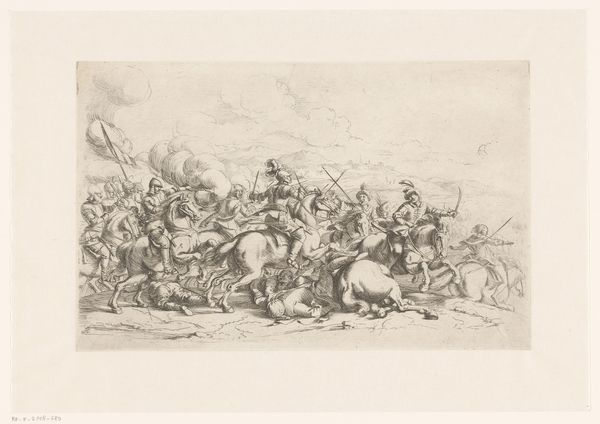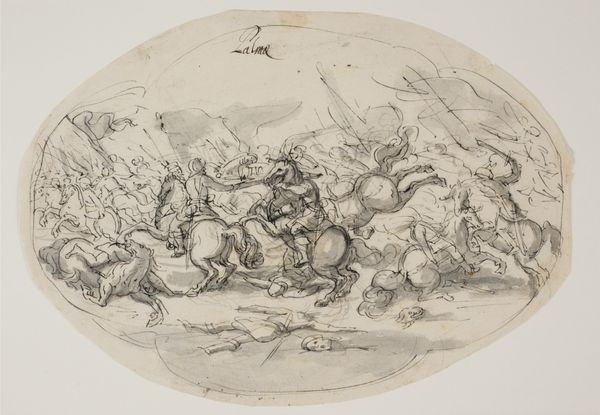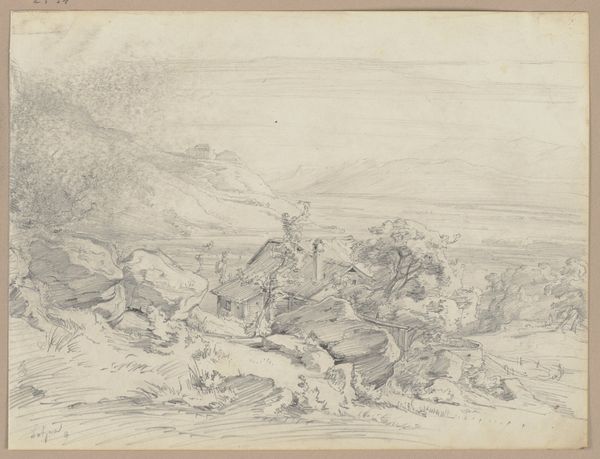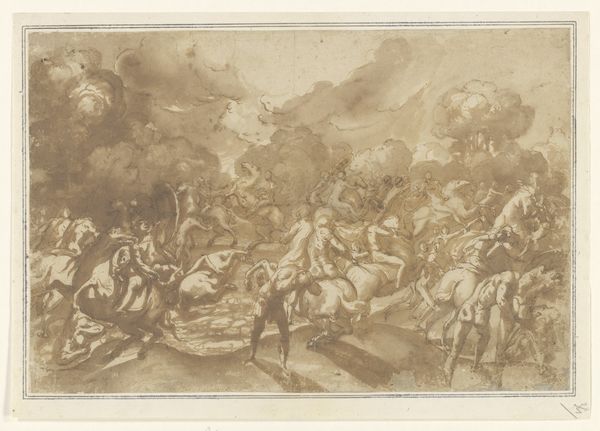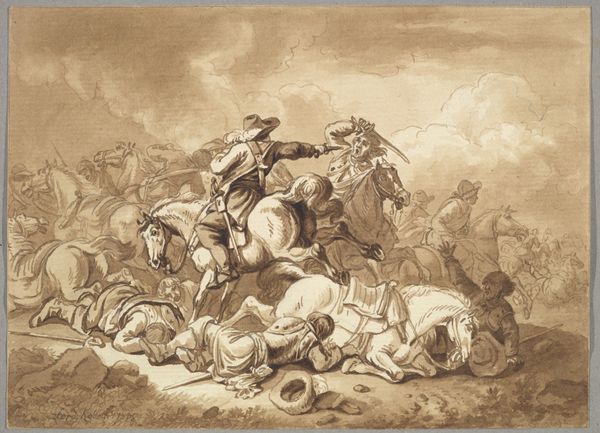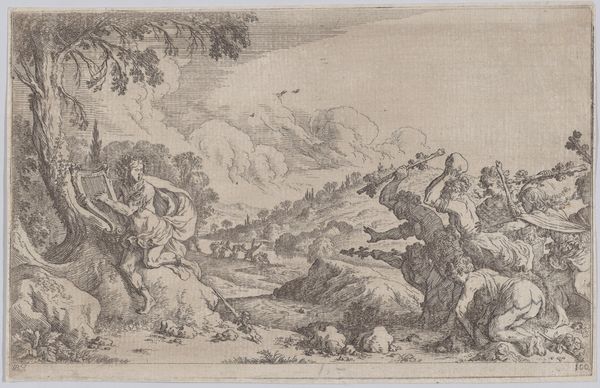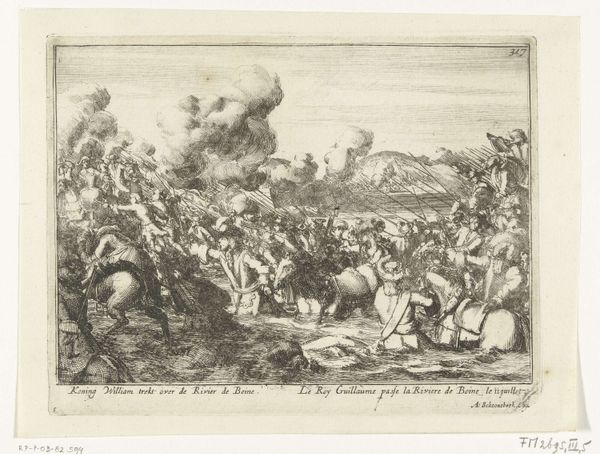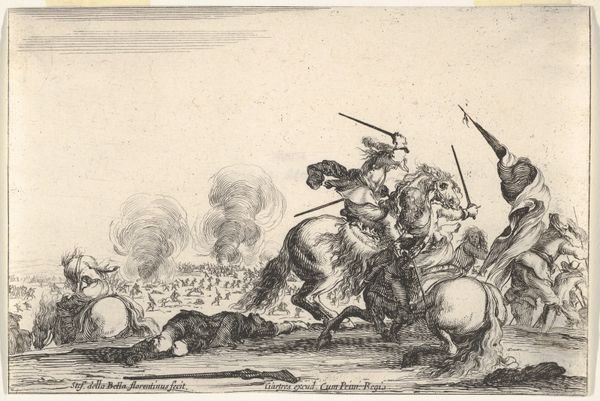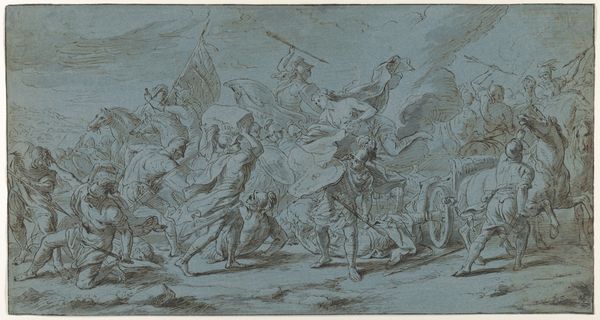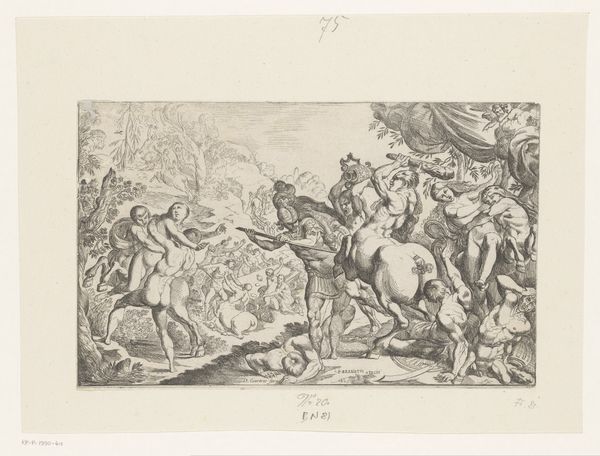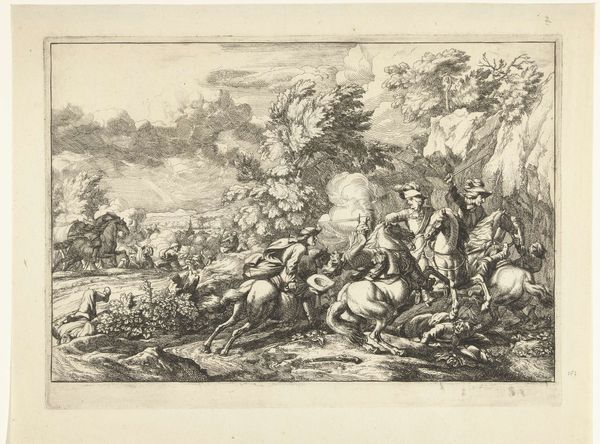
drawing, ink, engraving
#
drawing
#
ink drawing
#
narrative-art
#
baroque
#
figuration
#
ink
#
history-painting
#
engraving
Dimensions: Plate: 8 3/8 × 13 3/16 in. (21.3 × 33.5 cm) Sheet: 9 5/8 × 14 3/8 in. (24.4 × 36.5 cm)
Copyright: Public Domain
Curator: This engraving, "Combat at the Foot of a Tower," attributed to Jacques Courtois and created between 1635 and 1660, is a rather striking depiction of Baroque battle scenes. What are your initial thoughts? Editor: Well, there's an immediate sense of chaos, certainly. The energy radiating from the clashing figures and the fallen, it feels almost overwhelming despite being rendered in monochrome. The medium seems key here. Curator: Indeed. Its production values speak volumes. Engravings at this time democratized art; prints could be circulated widely, conveying power or, in this case, the visceral realities of war. How do you see this work functioning within broader narratives of conflict and representation? Editor: It’s interesting how the artist used ink to build form, crafting everything from human figures to explosions; it almost creates a feeling of temporality like it happened and vanished instantly. And note the fallen horses, the vulnerable bodies that were integral tools now useless detritus. Are we meant to see nobility, or exploitation, perhaps both intertwined? Curator: Exactly, you're touching on the complicated layers of history and ideology embedded here. Representations of war at the time can be interpreted through a lens of power dynamics – the state’s justification for conflict, its control of narratives, or even performative displays of masculinity tied up in colonial ambition. Editor: Thinking about the production side—engraving is labor intensive. The artist has to skillfully use tools to carve the lines that define every detail, but there's no paint. Is there perhaps an idea of violence implied here? The aggressive forcing of ink that mirrors the violent acts? Curator: That’s a powerful analogy! And I see that connection working effectively through an understanding of materials in context. The creation mimics the act depicted, which definitely gives added context, even adding modern parallels, with today’s narratives and depictions. Editor: The work definitely captures violence in multiple facets, with one echoing and informing the other, even now, many years later. It speaks about both power, in all its many forms, but it also reveals process in terms of war and artistry. Curator: Absolutely, considering this "Combat" through the multiple lenses of history and artistic production gives us insights into the narratives we consume, how they’re constructed, and, ultimately, what we’re asked to believe, across different times and forms of expression.
Comments
No comments
Be the first to comment and join the conversation on the ultimate creative platform.
